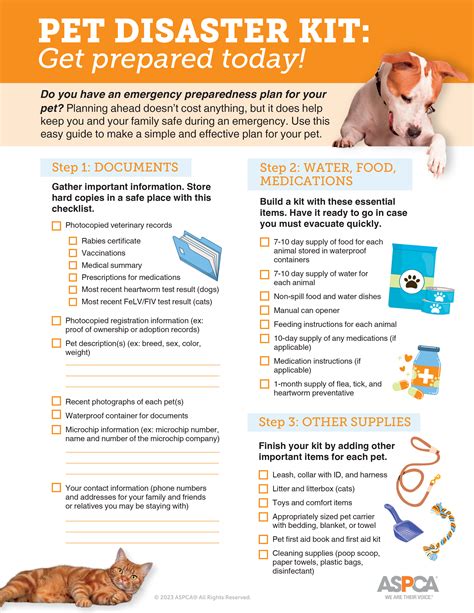Introduction
As climate change continues to intensify, extreme weather events are becoming increasingly common and severe. These events can pose a significant threat to our pets, who are often vulnerable to the elements. Therefore, it is crucial for pet owners to be prepared for emergencies and to have a plan in place to keep their furry friends safe.

Pet Emergency Preparedness Kit
One of the most important steps you can take to prepare for an emergency is to assemble a pet emergency preparedness kit. This kit should include:
- Food and water: Pack enough food and water for your pet to last at least three days.
- Medications: Include any medications your pet takes regularly, as well as a first-aid kit.
- Collar and leash: Make sure your pet’s collar has up-to-date identification tags.
- Crate or carrier: This will provide a safe and secure place for your pet during an evacuation.
- Comfort items: Include a few of your pet’s favorite toys or treats to help them feel more at ease.
Evacuation Plan
In the event of an emergency, you may need to evacuate your home with your pet. Therefore, it is important to have an evacuation plan in place. This plan should include:
- A designated meeting place: Choose a safe place to meet up with your pet if you become separated.
- Contact information for your veterinarian: Keep your veterinarian’s contact information on hand in case you need to seek medical attention for your pet.
- Transportation: Make sure you have a way to transport your pet to safety, such as a car or pet carrier.
Staying Informed
It is important to stay informed about weather forecasts and potential emergencies. This information can help you make informed decisions about whether to evacuate or stay home. There are several ways to stay informed, including:
- NOAA Weather Radio: This is a free service that provides weather alerts and forecasts.
- Local news stations: Local news stations will provide up-to-date information on severe weather events.
- Social media: Follow your local emergency management agency on social media for updates on emergencies.
Pet First Aid
In the event of an emergency, it is important to be able to provide basic first aid to your pet. This includes:
- Controlling bleeding: Apply pressure to the wound to stop the bleeding.
- Cleaning wounds: Clean wounds with soap and water to prevent infection.
- Bandaging wounds: Use a clean bandage to cover the wound and protect it from further injury.
- Giving medication: If your pet is taking medication, make sure to have it on hand and administer it as directed.
Conclusion
Pet emergency preparedness is an important part of being a responsible pet owner. By following these tips, you can help keep your pet safe in the event of an emergency. Remember, the best way to prepare for an emergency is to be prepared.
FAQs
-
What are the most common types of extreme weather events that can affect pets?
- Hurricanes
- Tornadoes
- Floods
- Wildfires
- Heat waves
- Cold snaps
-
What are the signs that my pet is in distress during an emergency?
- Panting or breathing heavily
- Drooling excessively
- Vomiting or diarrhea
- Lethargy
- Confusion
- Disorientation
-
What should I do if my pet is injured during an emergency?
- Provide first aid as needed
- Contact your veterinarian as soon as possible
-
What are the best ways to stay informed about weather forecasts and potential emergencies?
- NOAA Weather Radio
- Local news stations
- Social media
-
What are some tips for keeping my pet safe during an emergency?
- Keep your pet indoors as much as possible
- Provide plenty of food and water
- Create a safe place for your pet to hide
- Monitor your pet closely for signs of distress





















